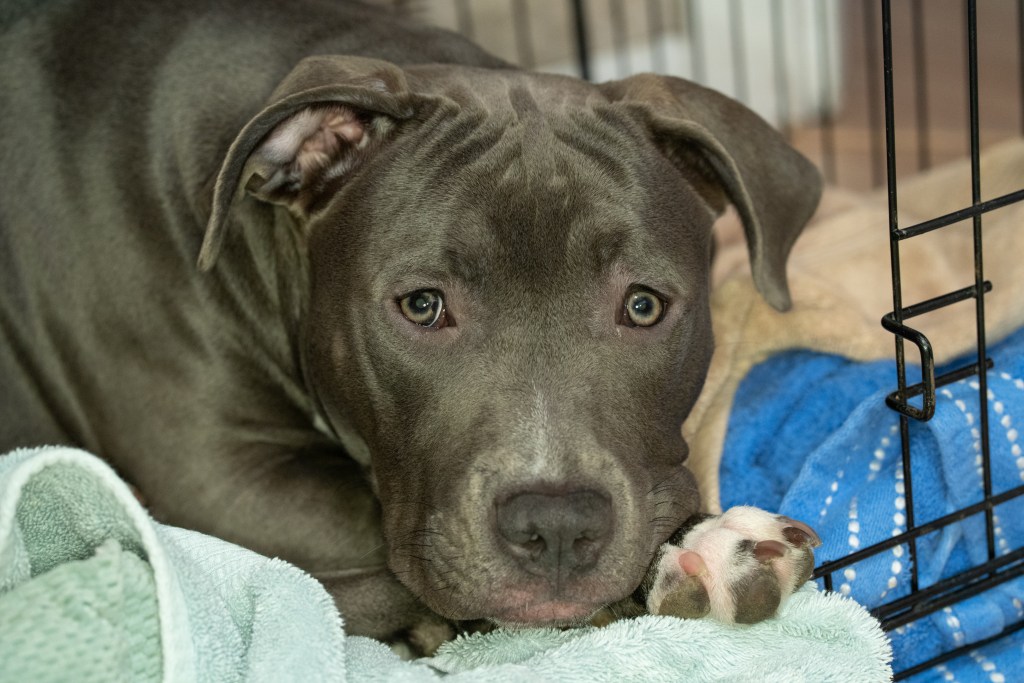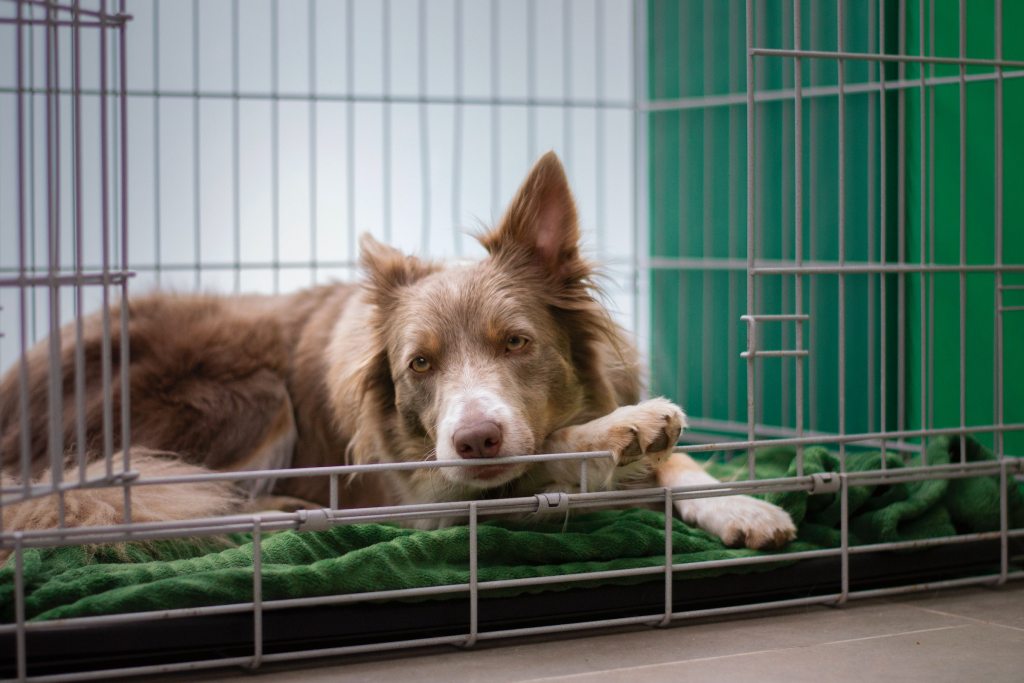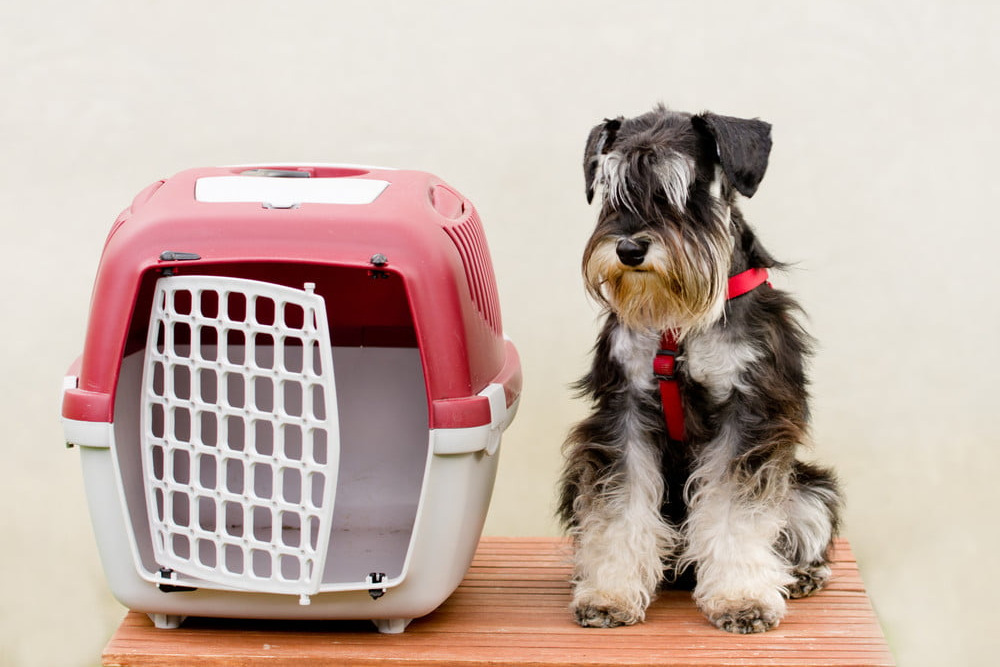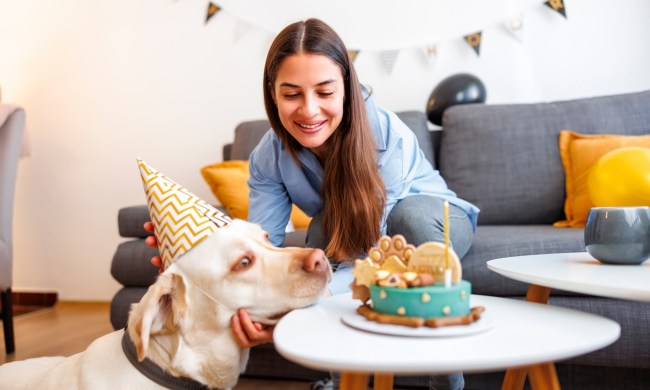If there’s one thing that’s certain, it’s change. We don’t always like it, nor do our canine friends, especially as they grow older. Fortunately, we are all adaptable. Regardless of what you’ve heard about older dogs, you can teach them new tricks — and that includes crate training.

Reasons you may need to crate train your older dog
There are many reasons why you might need to crate train an older dog. Perhaps you’ve adopted a senior who was never fully housebroken. Maybe you want your dog to travel with you by air. Crates also are a safe place for older dogs to heal after surgery or during an illness, and in case of emergencies. Regardless of why you need to crate train an older dog, with patience and kindness, most dogs wind up finding that they love having their very own special spot.

Here are the steps to follow for successful crate training
Whenever possible, training should begin well before your dog actually needs to use the crate. By taking your time and following these steps, you should be able to crate train your older dog with minimal stress to either of you.
Step 1: Choose the right space
Before you begin, designate a place in your home where the crate can stay permanently or at least during the training process. If possible, choose somewhere quiet and secluded where your dog can go if he wants to rest or escape noise or chaos. Or, if your dog enjoys being in the same room with the family, try finding a spot for the crate in the living room or kitchen area where everyone gathers for group activities. If your dog has a favorite place to retreat, consider setting up the crate in that general area so he can explore it before training begins.
Step 2: Select the right crate
Once you know where to place the crate, it’s time to choose one that’s right for your dog. Crates come in all shapes and sizes as well as in a variety of materials.
Choose the material that best fits your needs. You can choose from easy-to-clean wire cages, soft-sided carry crates, and multifunctional wooden or plastic crates made to blend with your household decor.
Choose the right size. The crate should be big enough for your dog to stand up, turn around, and lie down comfortably, but not so big that he can relieve himself on one side.
Step 3: Pay attention to timing
The best time to introduce your older dog to a new experience is when he is calm and relaxed. This includes crate training. Once you get the crate set up, let your dog become accustomed to having it in his space before you ask him to step inside. You might also want to make sure he’s had a potty break and a walk around the neighborhood before you begin. Keep your dog’s personality and activity schedule in mind when choosing the right time of day for training, too. For example, if your dog is more relaxed after dinner and before bedtime, consider setting aside a few minutes during this period to start the process.
Step 4: Use positive reinforcement
Crate training any dog takes a measure of patience, so take a few minutes before each session to put yourself in the right frame of mind. Your dog will adjust more quickly and be happier if you present the new experience in a relaxed and positive manner. Add his favorite bedding to the new space. Praise him as he explores the crate, especially if he ventures inside on his own. Resist the temptation to force your dog into the crate or leave him for more than a few hours at a time. Whenever he reaches a new milestone during training, reward him with his favorite treat, toy, or playtime activity.
Step 5: Begin slowly
If you’re reading this article, you likely need to crate your dog sooner rather than later. When the moment comes, begin well in advance so your dog will be comfortable spending time in his crate.
With the door open, place a few treats inside and encourage your dog to retrieve them. Keep the door open. Praise your dog if he ventures inside.
Once he is comfortable with this routine, add a command. Say “crate” before you toss in the treats. Close the door when he goes in to retrieve them. Stay in the room while he spends a few moments inside, beginning with intervals of five minutes or less.
As he adjusts, increase the amount of time he stays in the crate with the door closed. Leave the room for a few minutes, slowly increasing the amount of time you’re out of sight.
If your dog shows signs of anxiety or panic at any time, stop the training. Resume again when he’s calm and more receptive.

Common issues and how to avoid them
Older dogs are often creatures of habit, so while they can learn a new routine, it might take them a while to become accustomed to it. The key is to make the crate a comforting space, be consistent with daily training, and use a lot of patience during the process.
Your older dog may also be more fearful, especially if you’ve recently adopted him. It’s important to let him learn to love his new space at his own pace. When done correctly, most dogs come to see their crate as a welcome retreat.
Dogs are instinctual, and many mimic the behavior of their ancestors. Denning is one such behavior. Dogs appreciate having a special space all their own where they feel safe. When crate training an older dog, patience is key. It may take longer than anticipated, but the rewards of having a well-adjusted crate-trained dog are well worth the effort.



